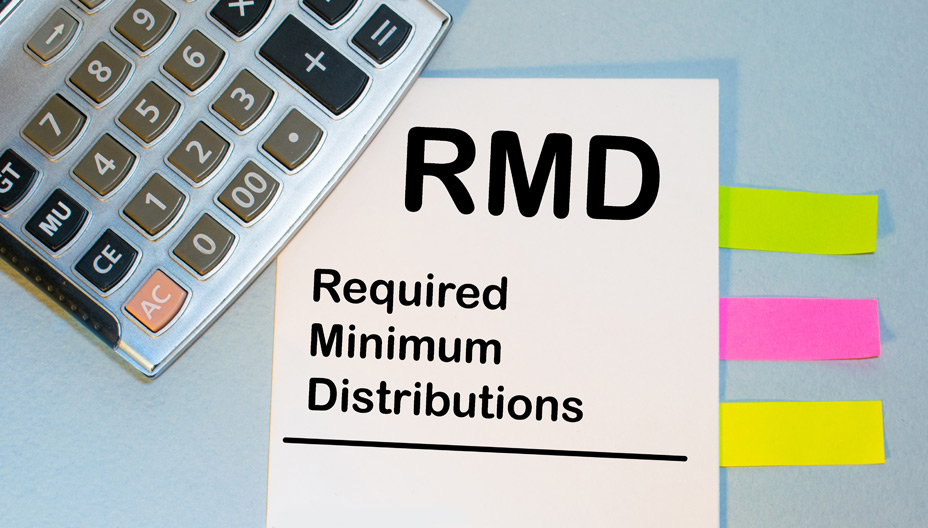Learn
What you need to know about Required Minimum Distributions

After decades of saving, you've built up a sizeable balance in your retirement accounts, but you can't leave that money untouched forever — even if you don't need it to cover living expenses. Once you turn 72, you must start making withdrawals every year. These mandatory withdrawals are known as required minimum distributions (RMDs). Continue reading to learn how RMDs are calculated, when you have to start taking them, and how you can use the funds.
What is a required minimum distribution?
An RMD is an IRS-mandated amount of money you must withdraw from certain tax-advantaged retirement accounts each year. Those accounts include:
- Traditional IRAs
- Rollover IRAs
- SIMPLE IRAs
- SEP IRAs
- 401(k), 403(b), and 457(b) plans
- Profit-sharing plans
The IRS imposes RMDs on these accounts because they're funded with pre-tax dollars. Requiring retirees to take withdrawals ensures wealthy individuals (and their heirs) can't avoid paying taxes on that money indefinitely.
You must start taking these withdrawals once you reach age 72 (70½ if you reached that age before Jan. 1, 2020).1 If this is your first RMD, you have until April 1 of the year after you turn 72 to take your RMD. After that, you must take your RMD by Dec. 31 each year.
You don't have to take an RMD from a Roth IRA unless it's an inherited account.
How to calculate an RMD
Calculating an RMD is simple.
- Find the balance of your tax-deferred retirement account as of Dec. 31 of last year.
- Find your life expectancy factor based on your age and life situation from the IRS Uniform Lifetime Tables (Table I, II, or III in IRS Publication 590-B).2
- Divide your total account balances by your life expectancy factor to arrive at your RMD for this year.
If you have multiple accounts, you may have to make several calculations. For example, you must calculate the RMD separately for each traditional IRA you own, but you can choose to withdraw the total from one or more accounts. The same rules apply to 403(b) plans. However, other employer-sponsored retirement plans, including 401(k) and 457 (b) plans, require you to calculate and take your RMDs separately from each account.3
 RMDs ensure wealthy individuals (and their heirs) can't avoid paying taxes on pre-tax retirement account contributions indefinitely.
RMDs ensure wealthy individuals (and their heirs) can't avoid paying taxes on pre-tax retirement account contributions indefinitely.
Your Synovus financial advisor can handle the calculation if you don't want to deal with the IRS tables.
If you don't take your RMD by the deadline (or take less than the required amount), you'll have to pay a 50% excise tax on the amount you didn't withdraw as needed.
For example, say your calculated RMD for the year is $38,000, but you only withdrew $20,000 by Dec. 31. Your RMD shortfall is $18,000 ($36,000 - $20,000). So the penalty for not taking the full RMD for the year would be $9,000 ($18,000 x 50%).
You report that excise tax on Form 53294 and pay the penalty with your Federal income tax return.
The IRS may waive the penalty if you can demonstrate that the shortfall was due to a reasonable error and that you are taking steps to remedy the situation. To request a penalty waiver, attach a letter to Form 5329 explaining why you missed the deadline.
What to do with your RMD if you don't need the money
You're still required to take an RMD even if you don't need it to cover ongoing living expenses. However, there are a couple of ways to use the money that can help reduce your tax bill or continue to grow your wealth.
- Make a qualified charitable contribution. You can donate directly from a traditional IRA to a qualified charity. This allows you to avoid taxes on up to $100,000 in distributions,5 but it still counts toward your RMD.
- Reinvest the money into a taxable account. While you'll still have to pay taxes on the withdrawal, you can reinvest the money into a taxable investment account.
RMDs play an essential role in your retirement finances. A financial advisor can provide additional guidance if you need help calculating your RMD or deciding how to use it. Questions? Please give us a call at 1-888-SYNOVUS (1-888-796-6887).
Important disclosure information
This content is general in nature and does not constitute legal, tax, accounting, financial or investment advice. You are encouraged to consult with competent legal, tax, accounting, financial or investment professionals based on your specific circumstances. We do not make any warranties as to accuracy or completeness of this information, do not endorse any third-party companies, products, or services described here, and take no liability for your use of this information.
- IRS.gov, “Retirement Plan and IRS Required Minimum DistributionsFAQs," updated March 16, 2022, accessed September 19, 2022. Back
- IRS.gov, “Publication 590-B, Distributions from Individual RetirementArrangements (IRAs)," 2021, accessed September 19, 2022. Back
- FINRA.org, “Required Minimum Distributions—Commonly AskedQuestions," accessed September 19, 2022. Back
- IRS.gov, “Form 5329, Additional Taxes on Qualified Plans (Including IRAs) and Other Tax-Favored Accounts," 2021, accessed September 19, 2022. Back
- IRS.gov, “Important charitable giving reminders for taxpayers," updated November 30, 2021, accessed September 19, 2022. Back
Do you have questions or ideas?
Share your thoughts about this article or suggest a topic for a new one
